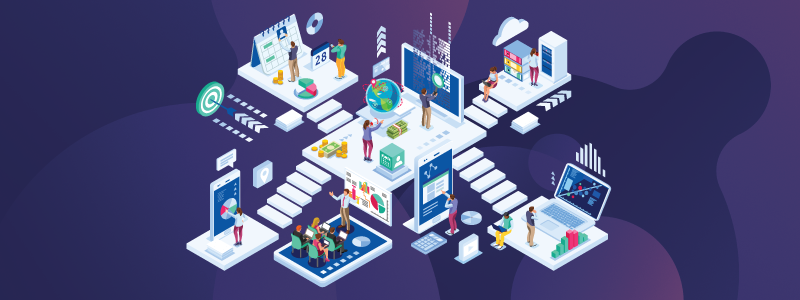Here at ACT | App Association, we care about the app economy – because our members drive it and the larger ecosystem of developer services, funding, and workforce development it created. Alongside the rise of the smartphone and other smart technologies that rely on apps, the app ecosystem grew exponentially since the first app store was launched in 2008. Since then, our members and millions of app developers around the world rely on platforms like Google Play and the Apple App Store to reach consumers everywhere. Simultaneously, the app stores can attract more customers by creating the best user experience and having the most innovative products on their platforms – and the stores depend on developers to create those products.
During their comparatively brief existence, app stores revolutionized the mobile economy and the concept of software distribution at a remarkable speed. The thriving app economy is the result of the contributions and innovations of both app developers and platform companies.
To highlight the constant change and level of innovation that occurs on the app stores, the App Association is releasing a new resource document to illustrate how the two largest app stores evolved, innovated, and interacted with each other over the years. This resource clearly shows that the app stores are competing with each other, continuously introducing new features, and building on each other’s ideas.
Some highlights include:
- When the App Store went live in 2008, it only featured 500 apps, now it boasts 1.8 million. Google Play started out with 50 apps and now has 3 million apps available.
- A year after Apple did so, Google introduced support for paid applications in 2009.
- Since 2009, developers can expose their apps’ content to the Android search function, which became possible for iOS developers in 2015.
- Apple introduced in-app purchases in 2009, which Google then also launched in 2011.
- In 2011, the App Store started supporting subscriptions for all publishers of content-based apps, followed by the Google Play store in 2012.
- Google allowed developers to respond to customer reviews in 2012. Apple followed suit in 2017.
- Apple introduced the “free app of the week” in 2012, which became a category on Google Play in 2017.
- Following Apple’s 2016 decision to change the 70/30 revenue split between developers and Apple to a new 85/15 revenue split if a user stays subscribed to the developer’s app for a year, Google Play announced it would implement the same policy.
- In 2017, Google launched “Play Instant,” allowing customers to use an app without installing it – a feature Apple introduced with its “App Clips” in 2020.
- By January 2020, developer revenue had increased to $155 billion on the App Store and $80 billion on Google Play.
- In December 2020, Apple launched its Small Business Program, which reduces fees from 30% to 15% for iOS developers earning less than $1 million per year from the App Store. Google recently announced it would implement a similar program starting in July 2021.
You can access the full document here.
This timeline shows the remarkable evolution of the app economy that happened in tandem with the development of app stores and smartphone operating systems. As the app stores serve as curated catalogs for apps, it is clear that they interact and compete with each other to attract more developers and consumers onto their platforms. These platforms continue to innovate and play a crucial role in the highly interconnected app ecosystem.
